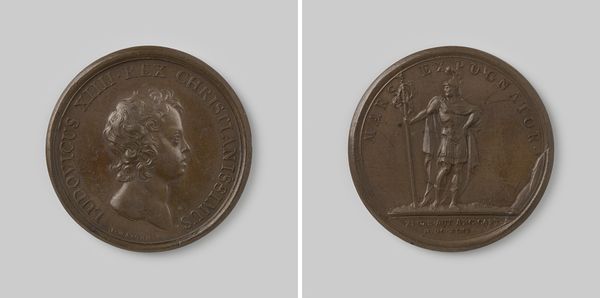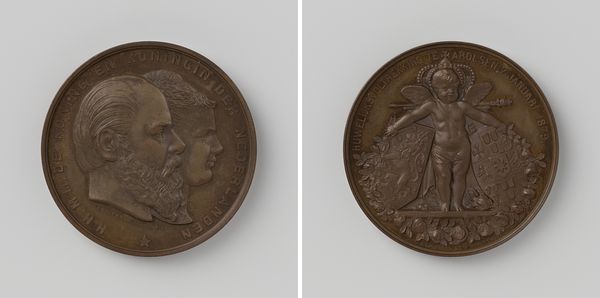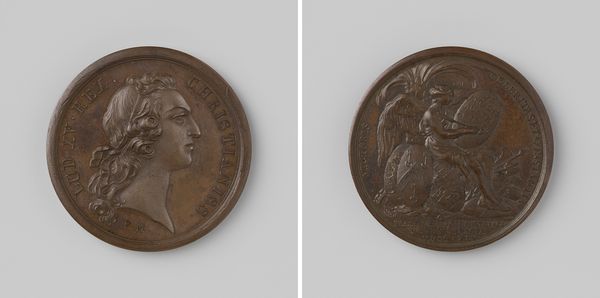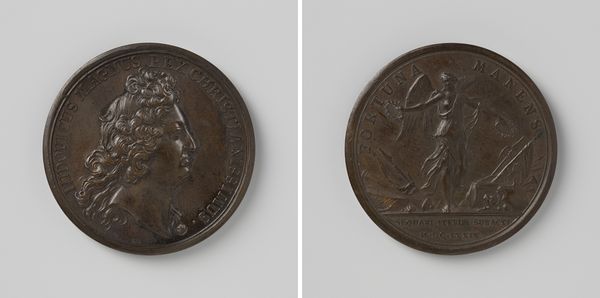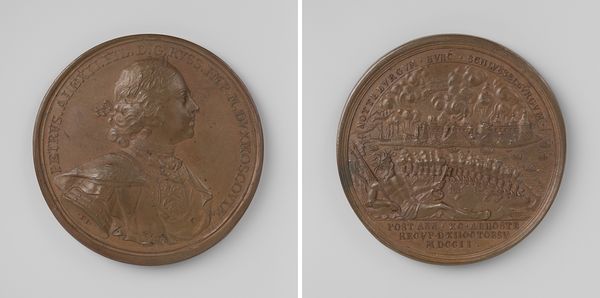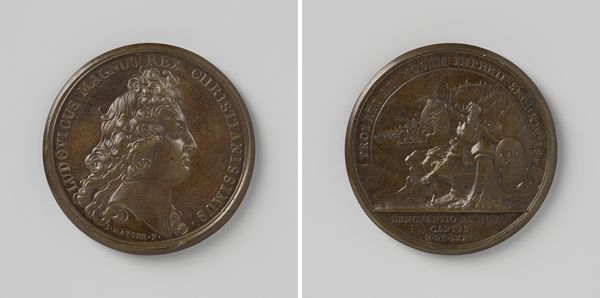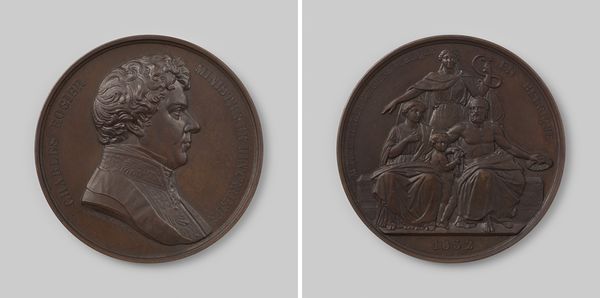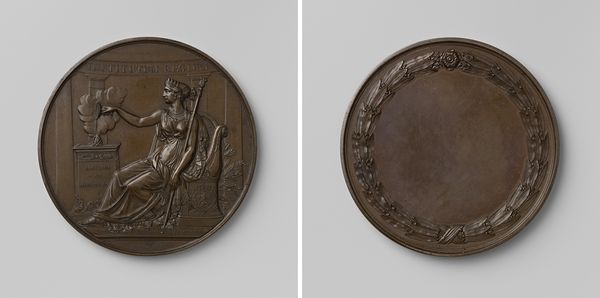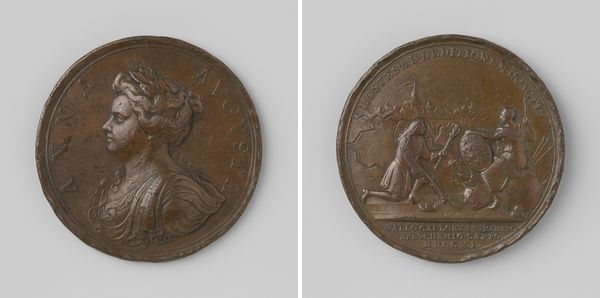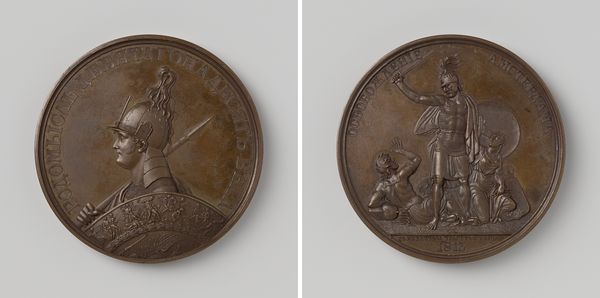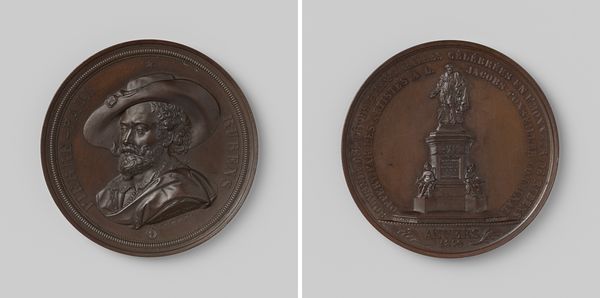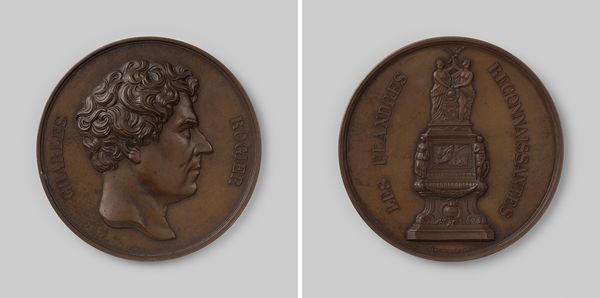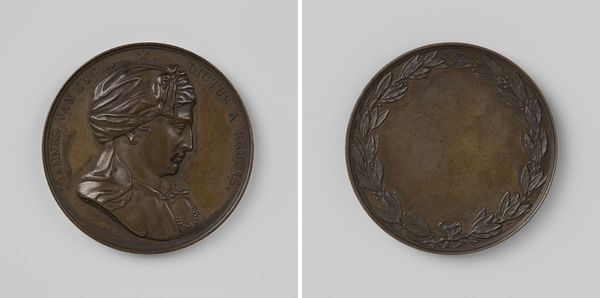
Huwelijk van Leopold, prins van Saksen-Coburg en Charlotte Augusta, prinses van Engeland 1816
0:00
0:00
metal, bronze, sculpture
#
portrait
#
neoclacissism
#
allegory
#
metal
#
sculpture
#
bronze
#
sculpture
#
ceramic
#
miniature
Dimensions: diameter 5.4 cm, weight 80.45 gr
Copyright: Rijks Museum: Open Domain
Curator: This medal, created by Thomas Halliday in 1816, commemorates the marriage of Leopold, Prince of Saxe-Coburg, and Charlotte Augusta, Princess of England. Editor: It's strikingly austere for a commemorative piece, wouldn't you say? The profiles are crisp, clean lines dominating the visual field, lending an almost solemn mood. Curator: Indeed. The neoclassical style here leans heavily on the visual language of power and dynastic succession. Halliday chose bronze for its enduring quality, a fitting material for immortalizing a royal union meant to produce heirs and secure political alliances. Editor: Bronze also provides a wonderful matte surface that enhances the bas-relief, accentuating the subtleties of the figures, especially their bone structure and carefully sculpted hairstyles. Curator: Turning to the reverse, we see an allegorical representation of felicity. Understanding this marriage requires us to situate it within the intricate web of European politics after the Napoleonic Wars. Charlotte, as heir presumptive to the British throne, represented stability, while Leopold offered connections to other European houses. The pressure on this union to produce a direct heir was enormous, shaping their public image. Editor: But the composition is rather curious. This allegorical figure is strangely devoid of energy, which contrasts rather starkly with its function. Perhaps it's the limited depth of the relief; the wings feel constrained. Curator: This medal encapsulates a critical moment where personal desires were subjected to intense scrutiny of power, privilege and patriarchal expectations of royal duty, especially reproduction, which the medal seeks to commemorate. Editor: Still, Halliday's execution exemplifies Neoclassical ideals of restraint and clarity, even if tinged with that solemnity we spoke of earlier. It is, at its core, an object carefully wrought for a specific purpose: legitimizing a political union through art. Curator: Looking at it with today's lenses of gender politics, this piece is interesting in that it reveals those deep-seated hopes and expectations embedded in the very structure of 19th century royalty. Editor: A fascinating demonstration of form serving function, even down to the selection of materials. Thank you, a superb artwork for discussion.
Comments
No comments
Be the first to comment and join the conversation on the ultimate creative platform.
